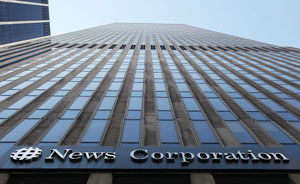As the world becomes more and more digital, so too does the world of public relations. The media landscape is constantly changing as publishers tweak their business models and expand further online. Social media cannot be ignored as a viable source of information and home to many influencers. PR professionals even have to take into account search engine optimization when performing one of their most foundational tasks – writing a press release.
 However, PR is and always will be a relationship-building activity and some of the most valuable parts of PR can’t be replicated online or over the phone; meeting with reporters and analysts in person can have a greater impact than sending an email or reposting a Tweet.
However, PR is and always will be a relationship-building activity and some of the most valuable parts of PR can’t be replicated online or over the phone; meeting with reporters and analysts in person can have a greater impact than sending an email or reposting a Tweet.
We recently hit the road with one of our Seattle technology PR clients, WatchGuard Technologies, and met with key reporters and analysts to discuss business strategy and cyber security trends. While visiting reporters in their offices across the country, we recalled the following three lessons we’ve experienced with other clients on media tours in the past.
- Making the effort to go on tour makes a difference. Reporters are inundated with pitches and emails these days, and it can be hard to stand out among the digital noise they experience every day. One way to cut through the noise is to meet in person. We make it as easy as possible for reporters by offering to meet them at their own offices – that way you minimize the interruption in their daily routine and they don’t have to worry about directions, transportation, and time away from their office that might impact their deadlines. Your out-of-the-ordinary tactic and willingness to meet them where they are will not go unnoticed.
- Developing relationships with media is easier. Over the phone, it’s hard to absorb a person’s true level of engagement or interest in the discussion, let alone make a real connection. You miss out on physical queues and body language that may have meaning. But meeting in person is different; it is a more engaging and more personal experience than can result in a more helpful dialogue for the reporter. Meeting in person is also more memorable than meeting over the phone, and creates the opportunity for reporters to recognize you down the road at industry events. Reporters are more likely to cover your company if they know who you are. It could also help them more readily recognize a pitch about your company in their inboxes.
- Sharing newsworthy information is essential, but immediate coverage shouldn’t be the only goal. While it may be easy to assume that reporters will write about whatever you discuss with them, coverage of your interaction shouldn’t necessarily be the ultimate goal of the media tour. Oftentimes, meetings that happen during a media tour provide an introduction to your company, educate a new reporter on your offerings, or set broader context about your industry. Media tours aren’t vehicles for breaking news because meetings are staggered and reporters receive the information at different times. While you should hope a few reporters will write following your media tour, you should also expect that many will reference the information you discussed in later stories to tie more of a framework around a news announcement. And this immediate inaction is no less valuable.
If your company is looking to build its brand, but may not have the typical “hard news” that reporters look for in a feature article, consider putting together a media tour. You will not only have an opportunity to introduce yourself to reporters and analysts and tell them the great things your company is doing, but you’ll also be able to establish a relationship that may pay off later when you are announcing that new product release or new partnership. If your company is looking for PR expertise in the Seattle or Washington, DC areas and you are interested in hearing more about the value of media tours, or would like our assistance in coordinating a media tour, contact us. We’d love to hear from you!

